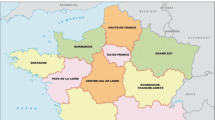Abstract
Spatial injustice is an important feature of spatial organization in Iran, which is formulated on a core-periphery structure from the local to national scale. The current research with use descriptive-analytic method intends to codify solutions to access spatial justice in Iran. The results showed that spatial injustice in Iran relates to its natural geography and unequal distribution of natural resources (inherent characteristics), the human geography and spatial structure of the nation, centralism in political system, methods of policy-making, national development planning, regional and global geopolitical environment, inequality in the distribution of political power, wealth and opportunity resources. According to the research, to access spatial justice, the following strategies have been suggested: optimal spatial distribution of wealth flow as a developmental prerequisite namely management of money flow in the country, allocation of a specific portion of provincial budgets for balanced development in order to achieve regional balance, strengthening of local potential to increase the efficiency of achieving balanced development, attention to the systemic thinking about spatial justice and planning at the local, regional and national levels, revision of the principles of the Constitution related to the centralization for spatial distribution of executive and political power in the country.
Similar content being viewed by others
References
Soja, E. (2010). Seeking spatial justice. Minneapolis: University of Minnesota Press.
Philippopoulos Mihalopoulos, A. (2014). The movement of spatial justice. https://www.researchgate.net/publication/275844357. Accessed 2014.
Hafeznia, M. & Ghaderi Hajat, M. (2016). Conceptualization of spatial justice in political geography. Geopolitics Quarterly, 11(4). http://journal.iag.ir/article_55814_cf23400b8d884e5b1b0513abb7aba619.pdf. Accessed 2016.
Norris, P. (2015). Theories of political activism. In P. Heywood, E. Jones, M. Rhodes, & U. Sedelmeier (Eds.), Developments in European politics (Palgrave Macmillan 2009). New York: Political Institute.
Harvey, D. (1973). Social justice and the city. London: Edward Arnold.
Dikec, M. (2001). Justice and the spatial imagination. Environment and Planning, https://doi.org/10.1068/a3467, hal-01258169. https://hal-enpc.archives-ouvertes.fr/hal-01258169/file/mdikec_01_justice.pdf. Accessed 2001.
Rawls, J. (1971). A Theory of Justice, avaliable at: http://www.consiglio.regione.campania.it/cms/CM_PORTALE_CRC/servlet/Docs?dir=docs_biblio&file=BiblioContenuto_3641.pdf.
Prange, J. (2009). Spatial justice: A new frontier in planning for just, sustainable communities. Medford, MA: Tufts University, p. 248.
Williams, J. M. (2018). Spatial justice as analytic framework. A dissertation submitted in partial fulfillment of the requirements for the degree of Doctor of Philosophy (Political Science) in the University of Michigan 2018. https://deepblue.lib.umich.edu/bitstream/handle/2027.42/143999/justwill_1.pdf?sequence=1&isAllowed=y. Accessed 2018.
Hafeznia, M., Ghaderi Hajat, M., Ahmadipor, Z., Eftekhari, R., & Gohari, M. (2015). Designing a pattern of measuring spatial justice: Case study of Iran. Spatial Planning Journal, 19. http://mjms.modares.ac.ir/browse.php?a_id=11685&slc_lang=en&sid=21&printcase=1&hbnr=1&hmb=1. Accessed 2019.
Hafeznia, M. (2002). Political geography of Iran. Tehran: SAMT Press.
Kamran, H. et al. (2005). Impacts of topographic structure on political geography of Iran. Journal of Geography, 3(6–7), 1–13.
Husseinzadeh, J., & Farhadi, A. (2014). The status of provinces in the regional accounts, Statistics, No. 1, March 2, available at: amar.srtc.ac.ir › article-1-116-fa.
Mirheidar, D. (2001). Principles of political geography (pp. 59). Tehran: SAMT Press.
Hafeznia, M., & Kavianirad, M. (2004). The new approaches in political geography. Tehran: SAMT Press.
Valigholizadeh, A. (2016). Spatial analysis of the effects of centralism in the formation of spatial-territorial inequalities in Iran. Journal of Political Geography Researches, 1(4), 139–168.
Ziari, K.-A. (1999). Principles and methods of regional planning. Yazd: Yazd University Press.
Karimipour, Y.-A. (2001). Iran and the neighbors, the sources of conflict and controversy. Tehran: Tarbiat Moallem University Press.
Ahmadi Nohadani, S. (2013). Finding the pattern of political character of buffered geographic spaces; a case study of Iran. Ph.D. Dissertation, Tarbiat Modares University, Tehran.
Rashidi, M. et al. (2014). Geopolitical pathology of spatial planning in Iran. Journal of New Approaches in Human Geography, 6(3).
Bladpas, A. et al. (2006). Analysis of actions of physical space of Iran in its political geography. Quarterly of Geographic Perspective, 1(2), 29–44.
Acknowledgements
The authors would like to thank Tarbiat Modares University-Tehran (TMU), and the Iranian National Science Foundation (INSF), for their financial and spiritual support of this research, as a postdoctoral research project.
Author information
Authors and Affiliations
Corresponding author
Additional information
Publisher's Note
Springer Nature remains neutral with regard to jurisdictional claims in published maps and institutional affiliations.
Rights and permissions
About this article
Cite this article
Ghaderi Hajat, M., Hfeznia, M.R. Codification strategies for achieving spatial justice in Iran. Spat. Inf. Res. 28, 357–367 (2020). https://doi.org/10.1007/s41324-019-00300-1
Received:
Revised:
Accepted:
Published:
Issue Date:
DOI: https://doi.org/10.1007/s41324-019-00300-1









